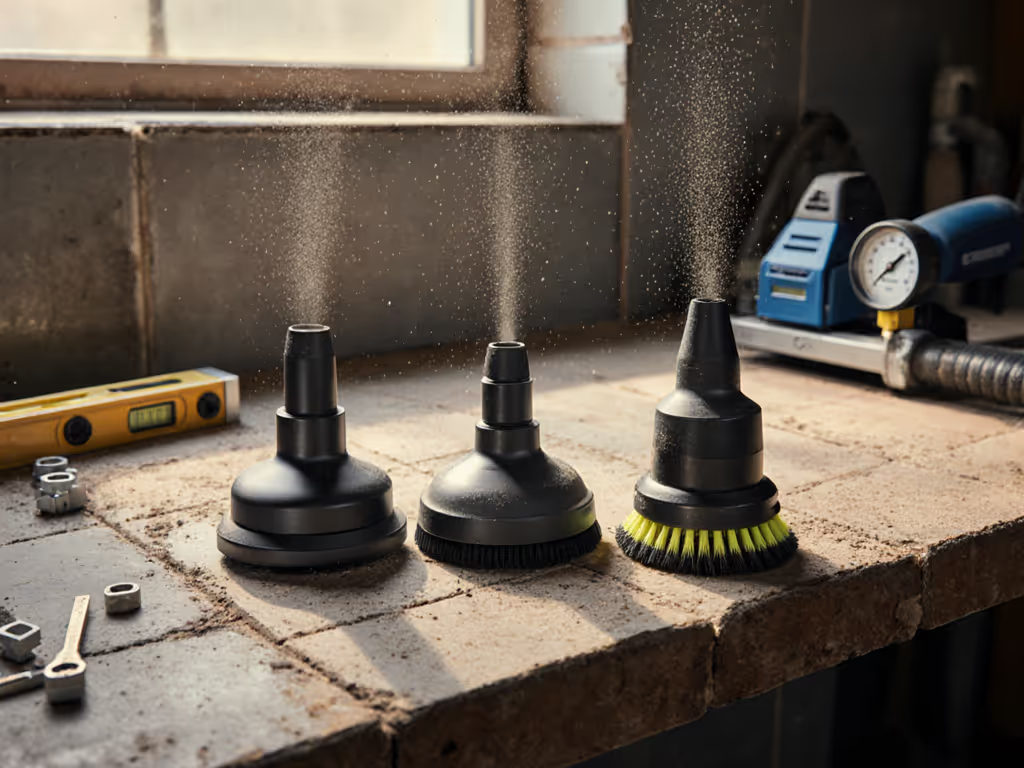
Best Shop Vacuum Hose Fit: Rubber vs Plastic Compared
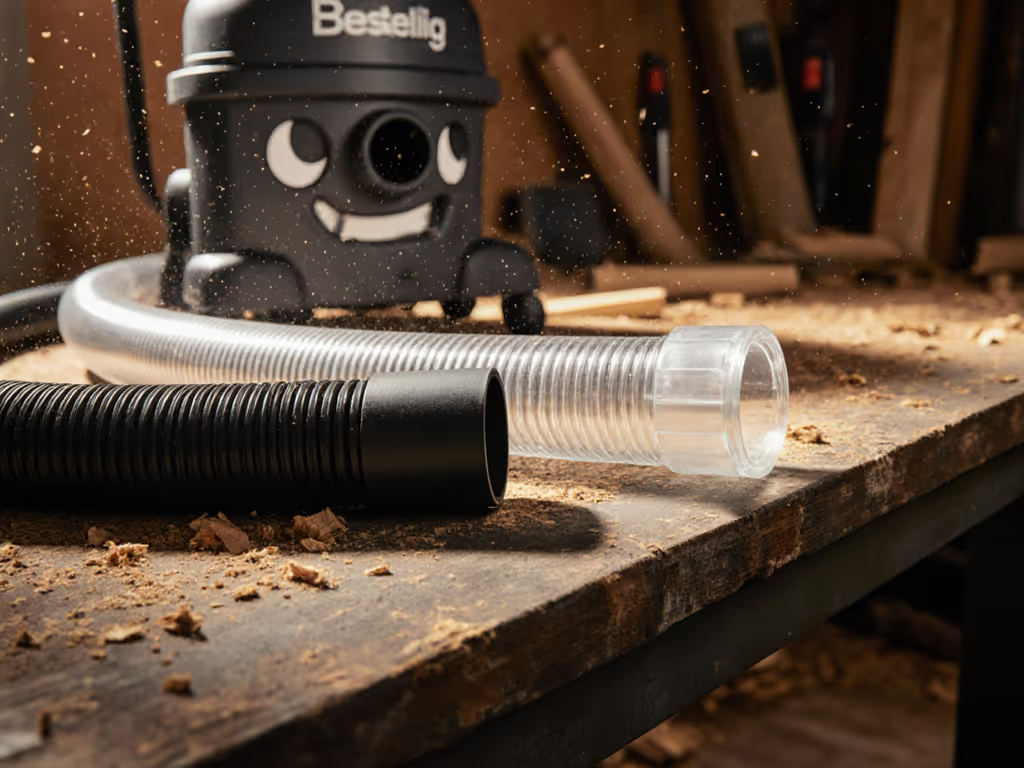
Let's talk about the heart of your dust collection system: the vacuum hose. After inheriting four vacs and a drawer of random adapters that still didn't fit our sanders, I grabbed calipers and mapped every port (27 mm, 36 mm, 1-7/8 in, 2-1/2 in). That's when I realized the true secret to the best shop vacuum performance isn't just suction power, it's the rubber vs plastic vacuum hose connection that determines everything. Fitment isn't just about connecting parts; it's the foundation of your entire dust management system. If you're dealing with leaks or loose tool ports in a woodworking setup, see our fix loose hose fits guide for quick, reliable solutions. In this guide, I'll show you how to choose the right hose material for your specific needs, because adapters are plan A, not plan B.
Why Hose Material Matters More Than You Think
When you're knee-deep in drywall dust or sawdust, your vacuum hose isn't just a tube, it's part of an engineered system. The wrong material choice creates hidden performance killers: static buildup, kinking, stiffness in cold weather, or premature wear. I've seen contractors waste hours on cleanup because they grabbed whatever hose was on sale without considering the interface requirements. Measure ports, map adapters, then nothing surprises on-site.
The Critical Interface First: Understanding Port Dimensions
Before you even consider rubber vs plastic, you need precise measurements of your tool's dust port and vacuum inlet. Most standard shop vacs use one of four common sizes:
- 1-1/4 inch (32 mm): Common on smaller Craftsman and Ryobi tools
- 1-7/8 inch (36 mm): Standard for Festool, Fein, and many European tools
- 2-1/2 inch (63 mm): Most common on Shop-Vac and RIDGID models
- 1-5/8 inch (41 mm): Specialized for some DeWalt and Milwaukee tools
Grab your calipers and measure the actual internal diameter of both your tool's port and your vacuum's inlet. Don't rely on marketing materials (they often list nominal sizes that don't match reality). I maintain a living fitment library with real measurements for 27/32/36 mm and common shop sizes, and the difference between "1-7/8" marketing speak and the actual 36.2 mm dimension is why so many adapters leak.
Step-by-Step Guide: Choosing Between Rubber vs Plastic Vacuum Hose
Step 1: Measure Your Work Environment Conditions
The "best shop vacuum" hose depends entirely on where and how you work:
- Temperature range: What's the coldest and hottest environment?
- Chemical exposure: Will you encounter solvents, oils, or just sawdust?
- Abrasive materials: Drywall dust, concrete, metal shavings?
- Static sensitivity: Working near electronics or fine finishes?
- Mobility needs: How far do you need to reach? How often do you move?
Write these conditions down before selecting your hose material. This single step eliminates 80% of compatibility issues I see in the field.
Step 2: Evaluate Rubber Vacuum Hoses for Heavy Duty Needs
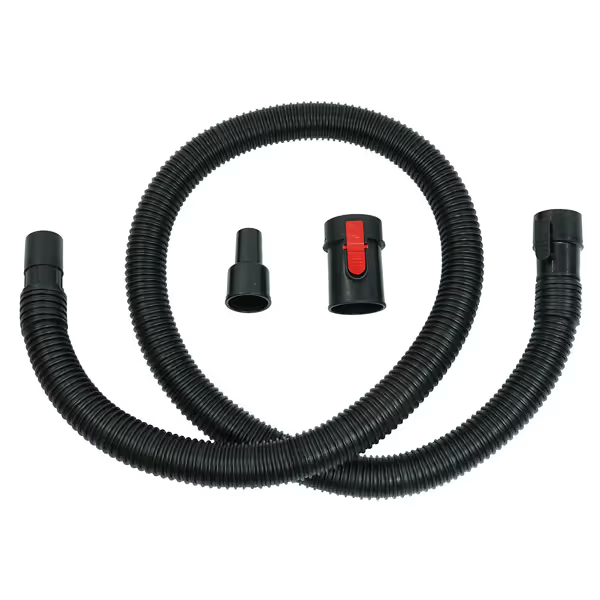
RIDGID Tug-A-Long 7 Ft. 1-7/8" Vacuum Hose Kit
Rubber hoses (actually synthetic rubber like EPDM or Nitrile) offer superior performance for demanding applications:
- Pressure resistance: Handles 300-6,000 PSI (vs. PVC's 50-300 PSI)
- Temperature tolerance: Works from -40°F to 250°F without stiffening
- Chemical resistance: Withstands gasoline, solvents, acids, and harsh chemicals
- Abrasion resistance: Lasts 3-5x longer in abrasive dust environments
- Anti-static properties: Naturally dissipates static when properly grounded
Perfect for: Concrete/masonry work, auto detailing, chemical cleanup, cold weather vacuum hose requirements, and heavy duty vacuum applications where kinking could be dangerous.
Explicit anti-static path note: Ensure your rubber hose has a conductive wire spiral embedded throughout and connects to grounded metal components at both ends. Without this, you're still building up static despite the rubber material.
Step 3: Consider Plastic Vacuum Hoses for Budget-Friendly Flexibility
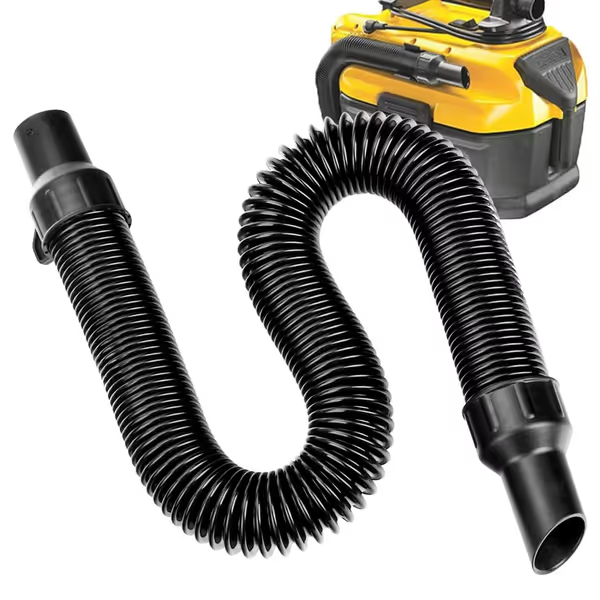
5140128-68 Replacement Hose Assembly
Plastic hoses (typically PVC or polyurethane) have their place in the professional toolkit:
- PVC hoses: Lightweight and affordable but prone to stiffening below 40°F
- Polyurethane (PU) hoses: Better flexibility in cold weather, improved abrasion resistance
- Crush-proof plastic hoses: Maintain shape under foot traffic but heavier than standard PVC
Best for: Indoor woodworking, light drywall, warmer environments, and situations where cost is a primary concern. I use them for specific applications but always pair with proper anti-static grounding when needed.
Precise diameters and tolerances matter here: A 2.5-inch nominal PVC hose might actually measure 2.38 inches ID, while the vacuum inlet measures 2.42 inches. That 0.04-inch gap creates a 17% air leak that destroys your CFM. Measure everything.
Step 4: Solve Specific Hose Challenges With Targeted Solutions
Hose Kinking Solutions
Kinking happens when the hose material can't maintain its shape under bending stress. For hose kinking solutions:
- Rubber hoses with wire reinforcement maintain roundness better
- Look for hoses with crush-proof spirals (visible as ridges running the length)
- Use hose hangers every 3-4 feet on long runs
- Never bend tighter than 6x the hose diameter
Cold Weather Vacuum Hose Considerations
PVC hardens around 40°F, becoming brittle below freezing. For cold weather vacuum hose performance:
- Polyurethane (PU) maintains flexibility down to -40°F
- Rubber hoses outperform PVC but may stiffen slightly in extreme cold
- Store hoses indoors when not in use in winter
Measure ports, map adapters, then nothing surprises on-site. This simple process has saved me countless hours on job sites and cut my cleanup time in half.
Heavy Duty Vacuum Requirements
For heavy duty vacuum applications like concrete or masonry work:
- Choose rubber or PU hoses with at least 2mm wall thickness
- Look for abrasion-resistant interior coatings
- Ensure proper anti-static properties (critical for fine silica dust)
- Prefer reinforced connections that won't pull apart under stress
Step 5: Build Your Complete Interface System
Stop thinking "hose." Start thinking "interface system." Your complete dust management solution includes:
- Tool port dimensions (actual measurements, not nominal)
- Hose material (matched to your environment)
- Adapter strategy (minimize chain length)
- Anti-static path (continuous from tool to vacuum)
- Connection security (locking mechanisms preferred)
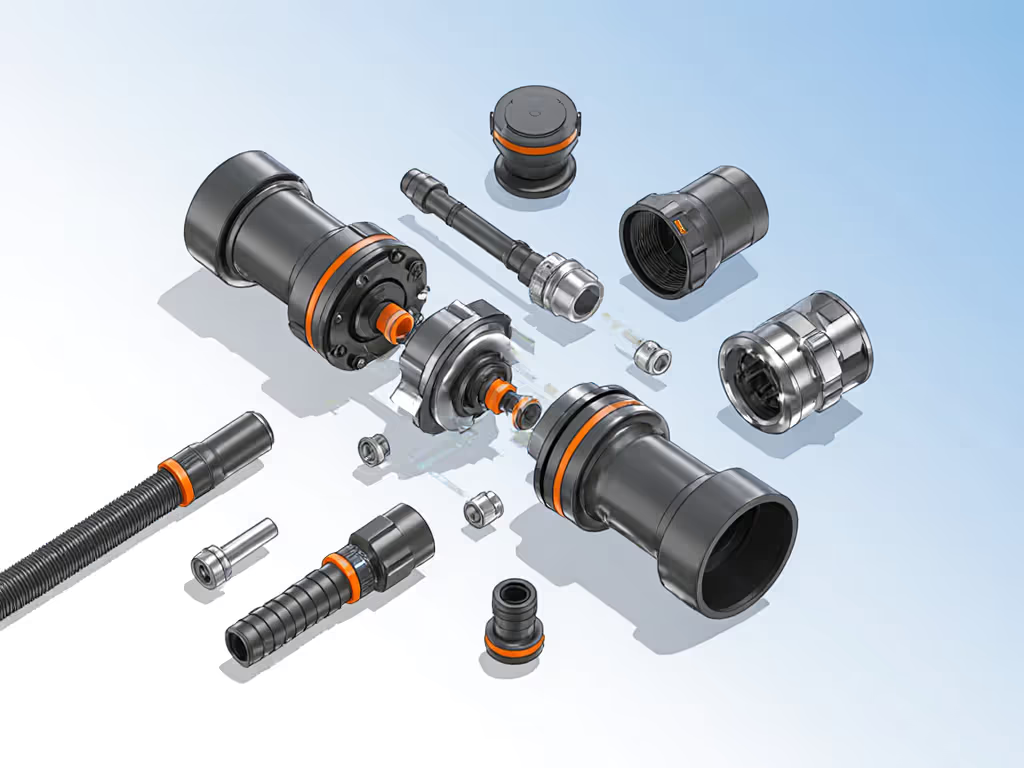
I keep a labeled fitment board in my shop showing all our common tool ports with corresponding adapters and hose types. No more guessing. No more incompatible parts. When you need a hose replacement guide, you should have one specific to your tools and environment, not a generic chart from a manufacturer's website.
Part numbers and model mappings I recommend:
- For RIDGID 2-1/2" systems: RIDGID 31713 Tug-A-Long hose ( )
- For DeWalt DCV580/581H series: Haiouus replacement hose ( )
- For Shop-Vac standard systems: Shop-Vac 9050333 hose ( )
Final Word: Your Hose Is Part of the System, Not an Afterthought
The difference between frustration and flow in your dust collection isn't just about the vacuum motor, it's about the entire interface chain. When you inherited four vacs and a drawer of random adapters like I did, you quickly learn that fitment drives performance; plan interfaces before buying boxes.
Stop treating hoses as disposable commodities. They're engineered components that determine whether your dust collection system works or fails. Whether you're choosing rubber vs plastic vacuum hose options, remember that the right material for your specific conditions makes the difference between consistent performance and constant frustration.
Your next step? Grab your calipers right now. Measure your three most-used tool ports and your vacuum inlet. Note the exact dimensions, not the nominal sizes. Compare them to the hoses you currently use. I'll bet you find at least one mismatch that's been robbing you of performance this whole time.
Related Articles

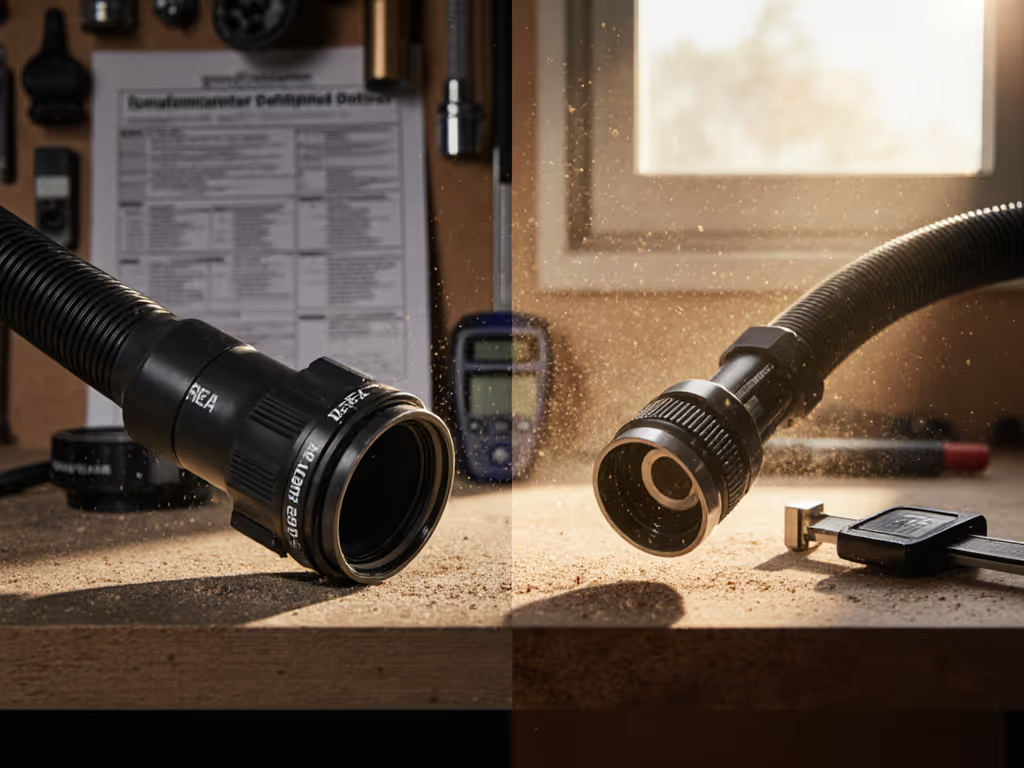
Shop Vac Compatibility Guaranteed: OEM vs Generic Accessories
Prioritize containment over “will it fit” using a risk-based checklist and quick field tests to decide when OEM parts are mandatory and when vetted generics will pass. Verify seals, documentation, and CFM to keep your vacuum setup HEPA-compliant and inspection-ready while avoiding costly fines.
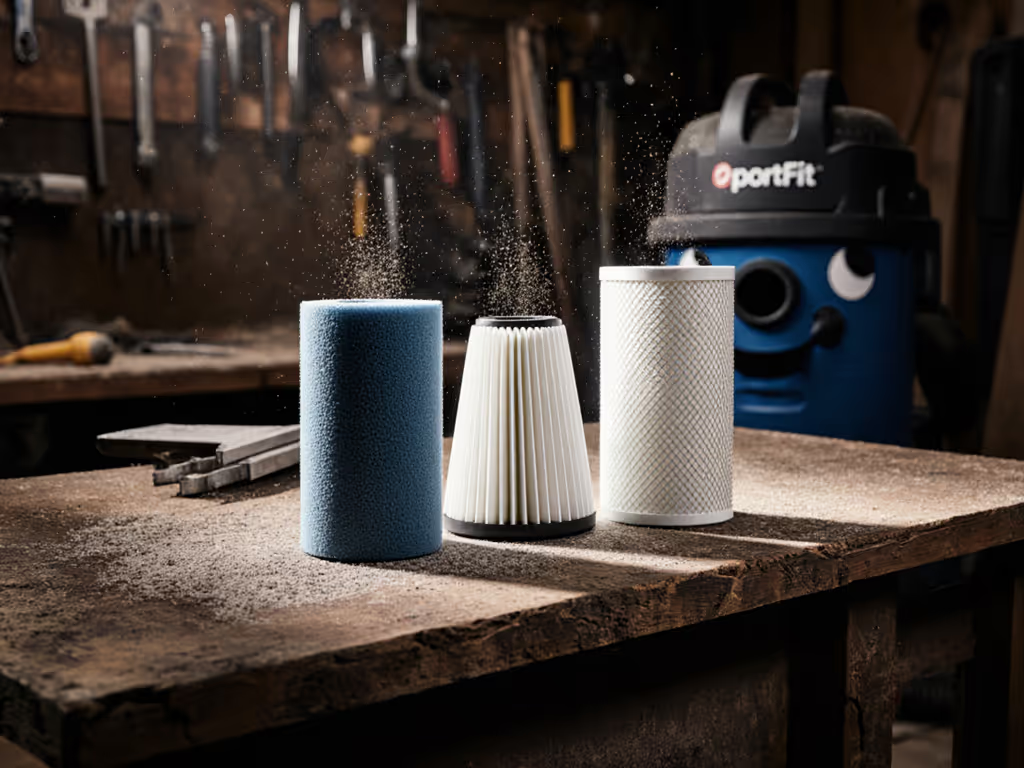
Shop Vac Filter Comparison: Foam vs Paper vs HEPA for Dust Control
Use measured airflow and containment data to choose between foam, paper, and true HEPA - and pair them with pre-separators - to keep suction high and fine dust contained. Get maintenance intervals and cost-per-hour tradeoffs to prevent clogs, extend filter life, and meet silica requirements.
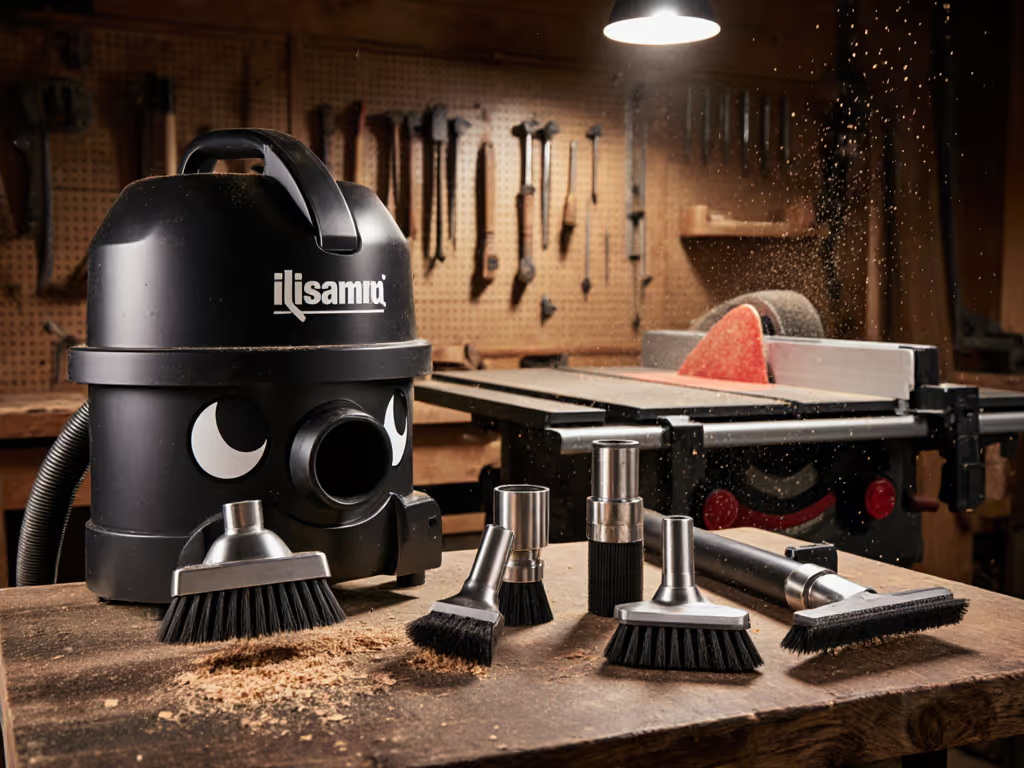
Best Shop Vacuum Attachments for Woodworking Dust Control
Optimize shop-vac dust collection by fixing port mismatches and leaks: measure in millimeters, use tapered conductive attachments with minimal connections, and set maintenance triggers. Preserve airflow, cut cleanup time, and reduce costly rework and callbacks.
